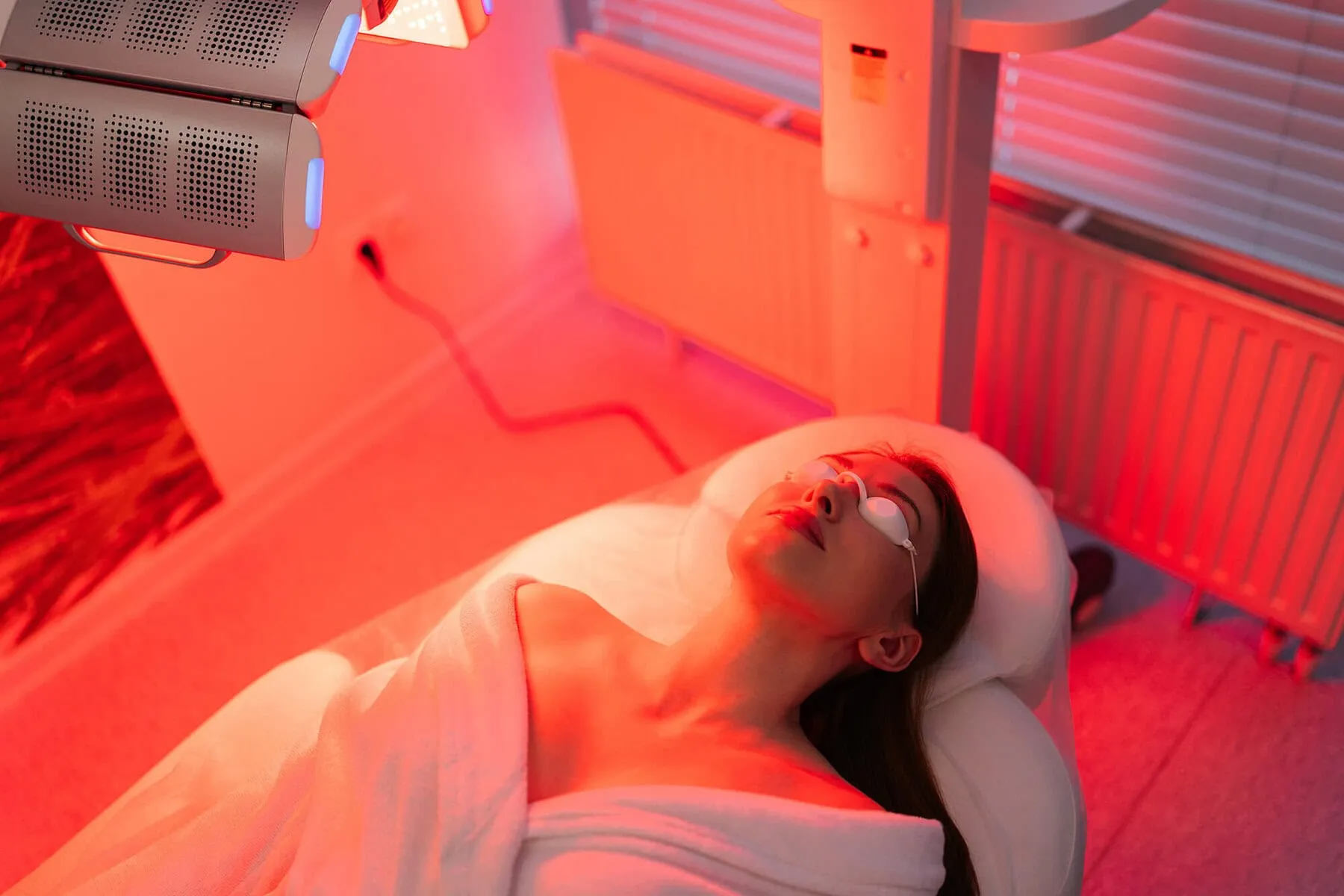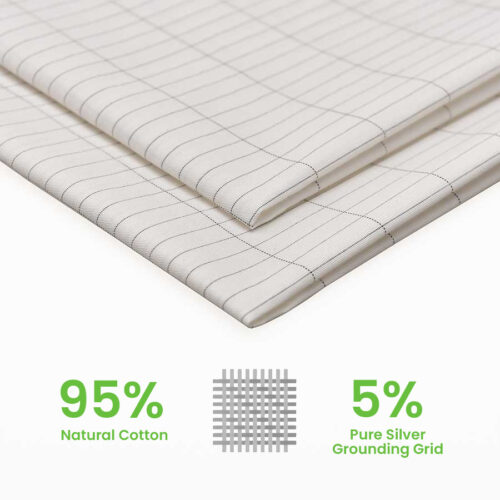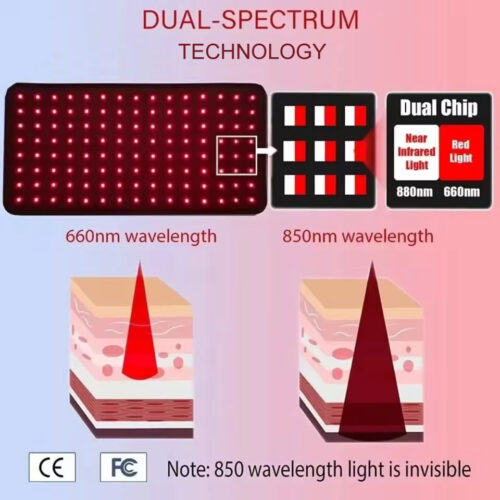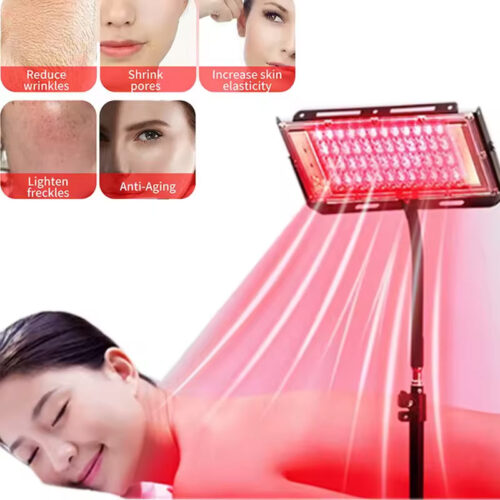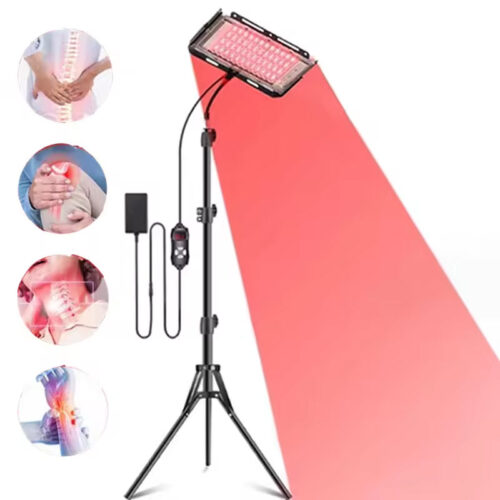Red light therapy (RLT), also known as low-level laser therapy (LLLT), has garnered significant attention in recent years due to its promising effects on health and wellness. It involves the use of red or near-infrared light to stimulate various cellular processes in the body. Originally developed for medical purposes, this non-invasive therapy has gained popularity for its potential to treat a variety of conditions, ranging from skin issues to chronic pain. In this article, we will explore the many benefits of red light therapy and how it works.
What is Red Light Therapy?
Red light therapy involves exposure to low-wavelength red or near-infrared light. These wavelengths penetrate the skin and tissues, promoting various beneficial biological responses. The light stimulates mitochondria, the powerhouses of cells, increasing the production of adenosine triphosphate (ATP), which is essential for cellular energy. This process enhances cellular repair, regeneration, and overall health.
1. Improved Skin Health and Anti-Aging
One of the most popular uses of red light therapy is for improving skin health and reducing the signs of aging. When red light penetrates the skin, it promotes collagen production, which is crucial for maintaining skin elasticity. As a result, regular use of red light therapy can reduce the appearance of fine lines, wrinkles, and sagging skin. It can also help with conditions like acne, by reducing inflammation and promoting faster healing of blemishes.
Additionally, red light therapy accelerates the healing of wounds and scars, making it a valuable tool for anyone recovering from skin injuries, cuts, or surgical procedures.
2. Pain Relief and Reduced Inflammation
Red light therapy is commonly used to alleviate pain and inflammation, particularly for individuals dealing with conditions like arthritis, muscle strains, or joint stiffness. The therapy works by stimulating the body’s natural healing processes and improving blood circulation, which helps reduce swelling and discomfort. The light also promotes the release of anti-inflammatory molecules and accelerates tissue repair, leading to faster recovery from injuries.
Studies have shown that RLT can help manage chronic pain, including conditions like fibromyalgia and neuropathy, by stimulating nerve regeneration and reducing nerve-related inflammation.
3. Hair Growth and Scalp Health
For those struggling with hair loss or thinning hair, red light therapy may offer a natural solution. RLT has been shown to stimulate hair follicles, encouraging hair regrowth in people with androgenetic alopecia (male and female pattern baldness). The therapy works by increasing blood flow to the scalp, which helps nourish hair follicles and promote the growth of stronger, healthier hair.
Additionally, red light therapy can improve scalp health by reducing inflammation and improving the overall condition of the hair follicles.
4. Enhanced Muscle Recovery and Performance
Athletes and fitness enthusiasts often use red light therapy to speed up muscle recovery and reduce soreness after intense exercise. By increasing circulation and ATP production, RLT helps muscles recover more quickly and reduces muscle fatigue. This can lead to improved performance and a shorter recovery time between workouts.
In addition, the therapy has been shown to reduce the severity of delayed-onset muscle soreness (DOMS), which is common after strenuous physical activity.
5. Mental Health and Mood Improvement
Emerging research suggests that red light therapy may have mood-boosting benefits as well. The therapy has been found to increase the production of serotonin and dopamine, neurotransmitters that play a key role in regulating mood, feelings of well-being, and motivation. This makes RLT potentially useful for people dealing with symptoms of depression, anxiety, and stress.
Red light therapy may also help regulate the circadian rhythm, promoting better sleep by boosting melatonin production, a hormone that helps control sleep-wake cycles.
6. Cellular Health and Anti-Inflammatory Effects
On a cellular level, red light therapy enhances mitochondrial function, leading to more efficient energy production within cells. This improved cellular energy can promote faster healing, reduce inflammation, and improve overall cell health. Red light therapy may also help reduce oxidative stress and inflammation, which are linked to many chronic diseases.
By improving mitochondrial function and reducing inflammation, red light therapy supports the body’s natural healing and regeneration processes, making it a valuable tool for general health and wellness.
7. Improved Skin Conditions
Red light therapy has been shown to help manage various skin conditions such as psoriasis, eczema, and rosacea. The therapy works by reducing inflammation, promoting skin cell turnover, and accelerating the healing of damaged skin. Many people with chronic skin conditions have found relief from symptoms like redness, irritation, and flare-ups with regular use of red light therapy.
8. Scar and Stretch Mark Reduction
For individuals looking to reduce the appearance of scars or stretch marks, red light therapy may be a helpful treatment option. The therapy stimulates collagen and elastin production, which can improve skin elasticity and texture. As a result, it can help minimize the visibility of scars from surgeries, injuries, or acne and reduce the appearance of stretch marks.
9. Dental Health Benefits
Although less commonly discussed, red light therapy can also be used in dental care to promote healing in the gums and oral tissues. It has been shown to reduce inflammation and accelerate recovery after dental procedures, such as tooth extractions or gum surgeries. RLT can also improve overall oral health by promoting better tissue regeneration and reducing pain in the mouth.
10. Chronic Pain and Neuropathy Relief
Chronic pain conditions, such as neuropathy or pain from injuries, can often be alleviated with red light therapy. By stimulating nerve regeneration and reducing inflammation, RLT helps manage chronic pain and accelerate recovery. It is particularly effective for conditions like diabetic neuropathy and sciatic pain.
Conclusion
Red light therapy offers a wide range of potential benefits, from improving skin health and reducing signs of aging to alleviating pain and inflammation. Whether you’re looking to recover from an injury, improve your appearance, or boost your mood, RLT is a promising treatment option with minimal side effects. While more research is still needed to fully understand its capabilities, many people have already experienced the positive effects of red light therapy in various aspects of their health.
Before starting red light therapy, it’s important to consult with a healthcare provider to ensure it is right for your needs and to determine the appropriate dosage and treatment plan. With consistent use, red light therapy could help you unlock a healthier, more vibrant version of yourself.

